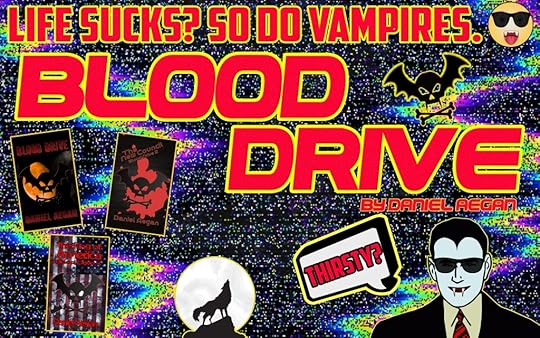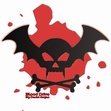Daniel’s Journal #76 – Assemble!
With so many teams in all forms of literature and entertainment, it’s sometimes difficult to choose your favorite. Whether it’s a superhero team like the Avengers or X-Men, a group of travelers and adventures like The Fellowship of the Ring in the Lord of the Rings trilogy, or a circle of friends like in…Friends. What can be more daunting for a writer is to create their own ensemble from the void. I’ve written several for my books. They don’t always get along, their belief systems don’t necessarily align, and they don’t mesh well together. This can lead to a chaotic mixture that can endear them to your readers or frustrate them.
Lucky for you, I’ve decided to share some insights from my experience putting together ensembled characters for my books. So grab a friend or three and get ready to rumble.
First off, you need a common goal. Otherwise, why would your team get together in the first place? For The Avengers, it’s fighting bad guys like Loki, Ultron, or Thanos. For The Fellowship of the Ring, it’s getting that darn ring to Mordor. In the case of Friends, it’s…um…living in New York on an unrealistic budget? Whatever the case, you don’t have an ensemble if they’re all walking in different directions. What you have there is a pointless mess on your hands.
Next, realize your ensemble doesn’t have to get along. Just because they’re after the same MacGuffin doesn’t mean that have to be all smiles and fist bumps while searching for it. The fallout of your group adds some tension and acts as a side story of your main plot, giving your readers something else onto which to latch. A tiff, argument, or a full-blown fight doesn’t have to be the driving force of the plot, but it should act as a catalyst to move it along. In the case of sitcoms or serial stories, this happens often as a way to drive individual episodes. In this case, it can go stale, so be careful if you’re venturing into these waters.
Another example of this would be a found family narrative. This is where your character would be separated from their kinfolk, whether by choice, force, or death, making them form a family bond with their new group. The Japanese use the word “nakama” to denote a group with deep bonds and a shared destiny, adding layers to the whole “found family” dynamic. This word is often translated to “comrades” or “friends”, but it has a deeper meaning. The best example of this is the anime One Piece, where a boy named Monkey D. Luffy puts together a pirate crew who becomes the family he never had. His nakama.
Each character in your ensemble should have their own voice and personality. Don’t let them blend into the group like a lemming. If they have issues with the appointed leader of the group or has a personal vendetta against another member of it, don’t let them lose it. Characters falling into a hivemind-like mentality is a common pitfall seen a lot in traditionally published books. Managing your characters’ separate personalities is essential to building your ensemble.
Now for the part where I talk about my books.
I’ve been writing ensemble pieces since I began this whole author brand of mine. My first book, Blood Drive (which turned into a thrillogy), sees an ensemble of two vampires, a redneck werewolf, a trigger-happy priest, and a pair of mafioso wannabes. They clash, they fight, they may not all make it to the final chapter of the third book, but they work as an entertaining ensemble (or so I’ve been told by readers). My next book, a sci-fi comedy called Humans Are Trash, focuses on a group of six wealthy people trapped on a space shuttle in outer space. This ensemble features an A-list actor, a pop star, a tech billionaire, a social media influencer, a rapper, and the son of a United States Senator. They don’t get along at all and are at each other’s throats from the start, but they have the common goal of getting home to keep them working together as best they can.
I have more books out there or on the way with more ensembles, but I think naming those two would be enough. Well, indulge me one more… My work-in-progress is a medieval superhero piece called Freek Squad involving a group of heroes trying to save the kingdom from an evil necromancer and his band of baddies. You see their common goals, their infighting, and the development of their bond during the course of the story. Will they become a nakama, or do they decide their paths diverge in different directions? You’ll have to wait for me to finish this one to find out! Look for it in 2027!
If you find yourself overwhelmed writing an ensemble story of your own, it helps to keep a running list or a cheat sheet of the characters in it with a little personality description in case you get lost. I’ll also list their individual character arcs and draw lines to where they intersect with their fellows’ parts of the plot, creating a tangled web of terse friendship and budding comradery. This can get messy, so keeping this close at hand while you’re writing can be a big help. The last thing you need is to go back and crowbar in some character development for one of your ensemble members you forgot to give one of them something worthwhile to do. Trust me, I’ve been there.
I’ll cap it off here, even though there’s a lot more to say about this subject. If you want to throw your two cents into the mix, hit me up on BlueSky and start a conversation. Everyone has their own way to do things, and you’re not wrong if you set your ensemble up differently than mine. Now put together your roster, assign everyone their roles, and assemble your team!
-Daniel Aegan—2/7/24
***
See a vampiric ensemble in action in The Blood Drive thrillogy! It’s full of action, laughs, and gallons of blood!
 Blood Drive: Available on the ‘Zon
Blood Drive: Available on the ‘Zon



